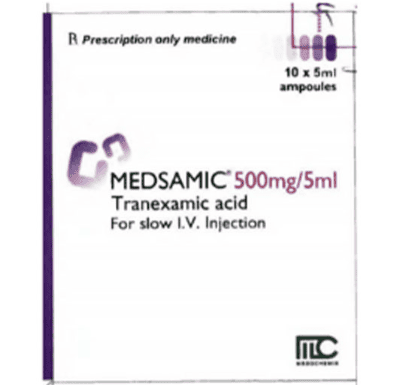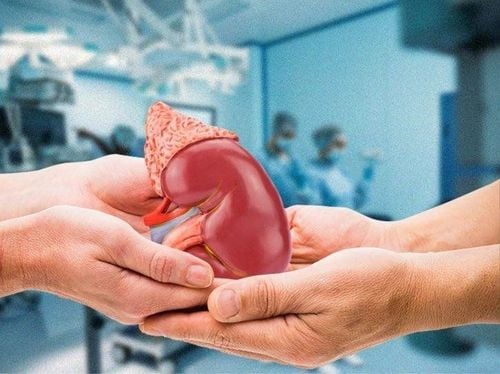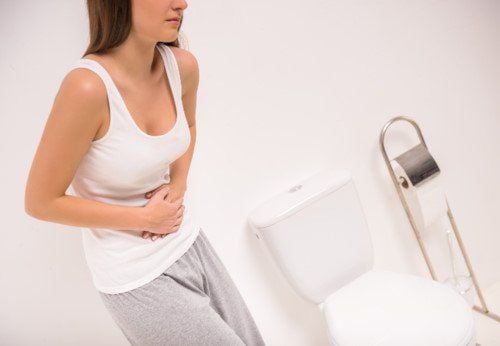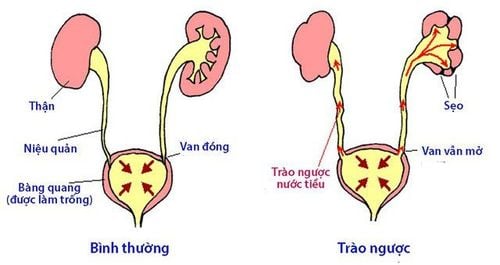This is an automatically translated article.
The article is professionally consulted by Master, Doctor Vo Thien Ngon - Department of General Surgery - Vinmec Danang International General Hospital.
The urinary system is responsible for filtering and removing waste products from the body. It is necessary to examine the urinary system regularly to promptly detect diseases and have appropriate treatment.
1. Examination of the urinary system includes what?
In the human body, two kidneys are located on either side of the spine, inside the renal fossa. In special cases, the body has only one kidney or three kidneys or the kidney is not located inside the renal fossa but is located elsewhere in the abdomen. From the kidneys down along the spine there are two ureters. Two ureters empty into the bladder. Urine from the bladder flows out through the ureters. In men, urine also passes through the prostate gland because the prostate gland surrounds the bladder. When examining the urinary system, the system will be examined from top to bottom in the order of upper anatomy, including: kidneys, ureters, bladder, urethra, prostate gland (in men).2. Kidney exam
Look: check if the lumbar fossa is swollen, if there is no tumor in the abdomenPalpation: this is an important method in kidney examination, including two positions:
supine position, legs extended Place patient in supine position with legs extended. Your doctor will examine each kidney in turn. The patient lies still, breathes evenly, and relaxes the abdomen. The doctor will feel when the patient breathes out, then the muscles are soft so it will be easy to recognize.
The doctor will use one or more hands to press back deeply to check for small deep tumors. Gently press upwards if the tumor is shallow and large.
One hand slips below the lumbar fossa position, one is placed on the patient's abdomen in the opposite position, the two hands are gradually pressed together.
During palpation, the doctor will check the patient's abdominal response and pain sensation
Look for signs of lumbar touch: One hand is behind the lumbar fossa region, the other hand touches and gently presses on the tumor. If the kidney is large, the hand will feel firm.
Look for signs of kidney wobble: One hand behind the lumbar fossa. One hand is placed on the abdomen in the rib cage. Keep the upper hand still, the lower hand press firmly and lift up. Continue to do the opposite, lower hand to rest, upper hand to push down with fingers. These manipulations need to be done when the patient begins to exhale and do it quickly and forcefully or there will be no results. If you have large kidneys, your upper hand will feel like touching a stone.
Side-lying position Place the patient in a supine position with one leg extended. If you want to examine the right kidney, lie on the left side, if you want to examine the left kidney, lie on the right side. The doctor will sit behind the back, the left hand is placed in the lumbar hole, the right hand is placed on the abdomen. Place the index finger about 2 knuckles from the 10th rib and proceed to palpate the kidney when the patient takes a deep breath.
Putting a pillow on the upper ribs, helping the patient lie on his side slightly bent will make the examination easier, especially in the case of a large tumor or a displaced kidney.

3. Bladder Exam
Normally, there is no bladder bridge, so the bladder will not be visible. In people with diseases that cause urine to stagnate in the bladder, when examining, the bladder bridge will be seen.How to examine the bladder:
Look: If the patient has a bladder bridge, the hypogastrium will have a round tumor the size of an orange, possibly up to the navel. Palpation: The tumor is palpable, smooth, stretchy, not moving. Type: The turbidity is circular in shape and protrudes above Urinary tract: Can pass a lot of urine, the tumor collapses immediately. Urinary catheterization is a differential diagnosis compared with other tumors. If there is a bladder stone, when urinating with a metal tube, you will hear a rattling sound. Vaginal and rectal examination: a round, smooth, stretchy tumor is seen. Different from subframe tumors. Large stones may be palpable in the bladder or small stones in the “walled urethra”. In addition, rectal examination also reveals rectal bladder-vaginal fistulas.
4. Urethral examination
Lift the glans, squeeze from the inside out. In the normal person will not see any discharge. In women, the biliary line will show the urethral opening at the top, the vulva at the bottom. Examining these parts can detect lesions such as: inflammation of the urethral opening, ulceration of the perineum, purulent discharge...5. Prostate Exam
A rectal exam will examine the prostate gland. Place the patient in the supine position, with the fingertips pointing upwards. If the patient lies on the stomach, on the buttocks, turn the front of the finger down for about 6 hours, the fingertips will touch a small tumor on the upper surface of the rectum. That is the front line.Normally, the prostate is not palpable or, if seen, only slightly raised, with two lobes and a median groove. The prostate gland is located around the neck of the bladder, hugging the urethra. The prostate gland is enlarged if:
Prostate cancer : The prostate gland is enlarged and very hard to the touch. It is even possible to palpate the very hard, protruding cancerous nucleus. May be one lobe or both lobes enlarged. Prostatitis : The prostate gland is enlarged, tender and very painful to the touch. On rectal examination, pus may be squeezed out. Take a sample of pus to be cultured and examined for bacteria. Prostatitis can spread into the bladder.

6. Full body examination
Examination of the urinary system requires a full body examination such as:Determining the state of edema Cardiovascular examination Blood pressure examination Blood test Ophthalmoscopy... Vinmec International General Hospital now has a package of examination and screening for urological pathology. help customers detect early the possibility of urinary diseases, especially prostate diseases (benign prostatic hypertrophy, prostate cancer); The pathology of urinary stones .... thereby helping customers have effective preventive measures.
When registering for the urological examination and screening package, customers will receive:
urological examination, urological ultrasound, total PSA quantification, free PSA measurement, urine culture, doctor Vo Thien Ngon He has more than 7 years of experience as a urologist and surgical doctor at Hospitals: Hue Central Hospital, Hue University of Medicine and Pharmacy Hospital, Tam Tri Da Nang General Hospital.
Doctor Ngon with the ability to specialize in the field of examination and treatment of diseases of the Urology and Andrology system, Urology surgery, endoscopic urological surgery, Laparo urinary tract surgery, endoscopy Urinary. Currently, Dr. Vo Thien Ngon is a Urology - Orthopedic Surgery Doctor, Department of General Surgery, Vinmec Da Nang International Hospital
Please dial HOTLINE for more information or register for an appointment HERE. Download MyVinmec app to make appointments faster and to manage your bookings easily.














